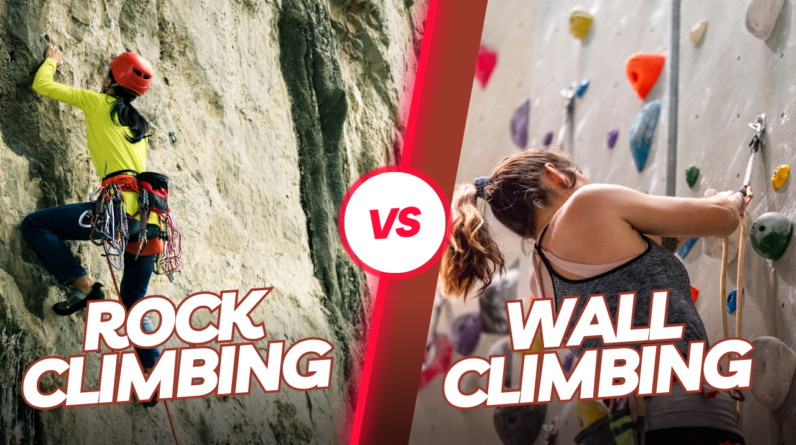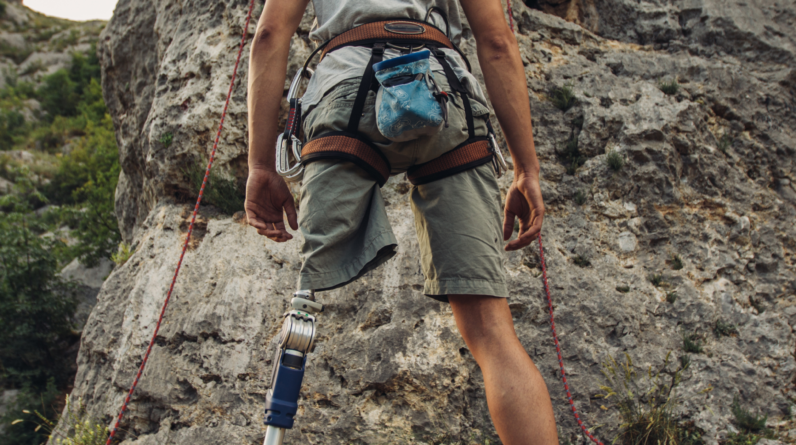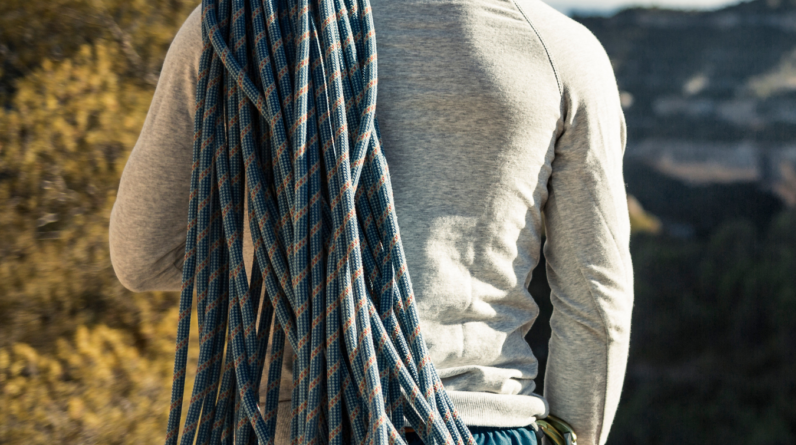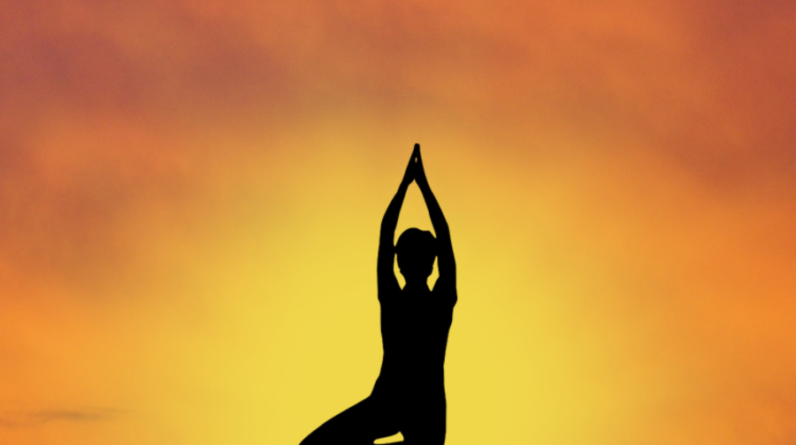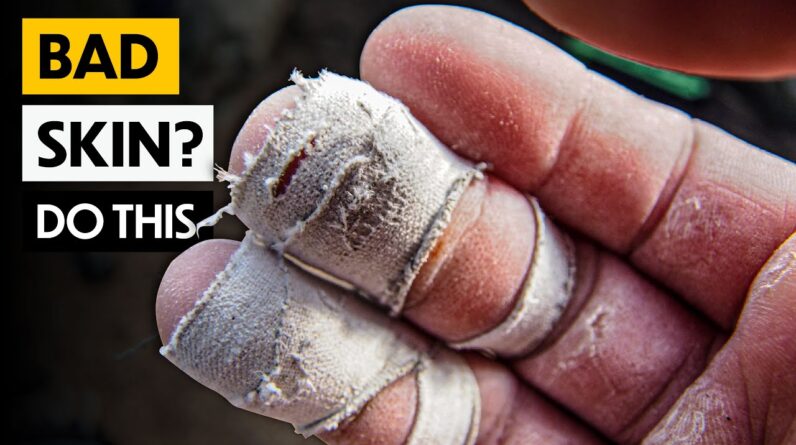
Skin condition is as important as wearing good climbing shoes, or maybe even more important. However this can be overlooked or underappreciated. What’s more, skin care tactics are nuanced and extensive. In this episode Josh Hadley and Tom Randall talk about elite level skin care, tactics and a hot tip from Adam Ondra that might be ground-breaking.
We believe that skin condition is Actually one of the most underrated Performance factors in climbing so today Me and tom are sitting down to talk About all the best tactics you can use To get the most out of your skin and Boost your performance [Music] I think you’ve got to think about it Like this Would you think about going climbing and Trying your hardest projects or even a Quality climbing session with a pair of Climbing shoes they’ve got a little hole In the end of them The rubber is just a bit too thin And the bottom of your shoe is slightly Damp you just wouldn’t you know this is Going to massively affect performance And it’s exactly the same thing with Your skin in this video we’re going to Cover the topics of how to deal with Sweaty skin dry skin also the tactics we Use for indoor versus outdoor climbing And skin repair and protection tactics And i’m also going to tell you about Adamandra’s Secret Skin hardening method which i nicked for My own climbing we’re starting with Dealing with sweaty skin or damp skin And we’re going to start with Pre-climbing tactics what you can do Before you arrive at the crag and then
We’ll move to some of the tactics we use When we get to the crag if you’ve still Got that sweaty skin i am a climber who Has Really bad Thin damp skin it’s a nightmare i’ve Had to deal with it all of my climbing Career and it wasn’t until i discovered Drying agents and some of the products Are out there on the market in terms of Making your skin Harder thicker drier That i really had a tactic for dealing With this before going climbing and There’s actually kind of a range of Products on the market which go all the Way from a relatively light touch and The solutions of active ingredients in Terms of drying are not too strong all The way through to really really strong Ingredients and i think it’s really Important to recognize with the drying Aspect Using these products is that every set Of skin or if every person is unique and You will have to learn the right amount And type of product to use for your skin So just because something works for me Doesn’t necessarily mean it works for You so be aware of that So i’ve got a few things here um lined Up in front of me i use rhino skin I’ve used it for a number of years now i Think it’s absolutely brilliant but i’ve
Had to learn What works and how frequently i have to Apply it i used to use also antihydrol Which is really hard to get hold of in The uk um actually um so this is stuff That i use now and you have all the way From a lighter product which has a Relatively low amount of methane which Is the sort of active ingredient all the Way through to uh the kind of beast in a Bottle which is this tip juice stuff And For me in terms of using it is i will Apply it in both the morning and the Evening So i’ll put it on before i go to bed at Night and you have to be quite careful With this stuff that where you apply it Is not in the areas that you don’t want To dry or thicken so at night time Something like this with the tip juice You can see that it actually comes out With like a little um brush like that And then i’ll just apply it to the areas That i actually want to dry And harden on my skin and then i’ll whop My hands around dry it and then i’ll Leave that over a period for me i Actually have to do this twice a day to Get some kind of effect because i think Ultimately in bed it sort of you know Rubs off and you don’t end up with as Much of it in your hands as you want to And then in the morning likewise you go
And do things you eat your breakfast You end up washing your hands because You do some washing up whatever it might Be and it still comes off so it’s just That kind of frequency element which Really helps One thing to really pay attention in Terms of the placement is with the Antihydro this is one of the strongest Solutions you can get and if you get This into the Creases in your skin it’s really easy to Get splits um when you’re holding onto Kind of like any size of hold because The tension the skin will just cause it To split it gets too dry and thick so That’s something to be aware of and it Does require a bit of Self-experimentation To find the point where it works for you But once you’ve got it and you’ve nailed It it’s just Brilliant and i would say overall it Takes around Some between four to seven days to see An effect from using these kind of Products so don’t expect to see Instantly perfect thick skin after One day two days give it kind of up to Around a week So i’ve used anti-hydro before i’ve also Used the rhino spray the dry stuff and Something i’ve found particularly when I’ve been on a climbing trip is i’m
Applying this like you said the days up To the climbing trip you need to leave That time for it to take effect But then i find when i come back from a Climbing trip And i’ve taken several rest days to Chill out i find that the active Ingredients are going to make my skin Grow much faster and get quite thick Which is great when you’re climbing a Lot but then when you stop climbing you Can have this effect where your skin Just kind of like sheds off and you get These big like peeling bits of skin so Probably what goes in with that is also Being on top of sanding and make sure Your skin is smooth Because the friction on the rock when The dryness is going to help you still Want your skin to be smooth to have Traction on the hand holds yeah actually That’s a really good point because Essentially what the active ingredients In here do is that they denature the Protein within your skin so if you have Thick skin at a certain point The That part of the skin will go very Yellow and hard and thick So unless you’re kind of sanding down And bringing that layer of skin back in Line with the rest of your skin and the Dryness and the thickness of it you just End up having
More problems with shedding of skin with Splits and just general skin quality so It’s really important to kind of Constantly maintain with a sanding cycle On that one final note to point out About the differences between rhino and Antihydro and how you use them Is that Rhino is a kind of rubbing ingredient That is clear looks like water and you Can use it on the day of when you’ve Climbed but also the night before and It’s very hard to know where you put That and the rhino comes in a Degree of intensities for the drying Activity within it whereas anti-hydrol Is kind of hardcore right from the Outset so you need to experiment with This first off and also as it’s a cream You only really apply it the night Before and it’ll leave little pink sort Of spots or dabs on your hand where You’ve got this as a drying Agent and you can’t use that in the Daytime when you’re actually going Climbing this is a wash off item and Just be super cautious about it when you First use it right we’re going into some At the crag tactics now and this is About what to do if you have sweaty skin So the first thing is just letting wind And air do the work for you so i’ve got A pretty cheap i think this is about 10 Pounds
Usb rechargeable fan you’ve probably Seen like big makita fans but to be Honest a breezy day will also do it and I’m always in the habit of insatiably Doing this And then whenever i’m not climbing i Tend to like stand like this like i Don’t let my hands touch anything so i Always have very sweaty skin and yeah I’m always trying to keep my hands dry As well as being able to use a fan like This and just hold it over your Fingertips between attempts if you have Sweaty skin you’re probably going to be Taking much longer rests between Attempts and that’s partly to let your Skin Dry off But also to let your skin cool down so Skin temperature is a massive thing this Also plays into the tactics of choosing The right time of day to try your Projects so particularly in the uk in The summer we’re going to be going out In the morning or in the evening so Sometimes you might even see us with Lamps at night time in the summer just To escape the hotter temperatures And keep the skin cool and it’s going to Sweat less i suppose a top end aspect to Deal with is the humidity Plus wind speed and direction element Within climbing you’ll see a lot of top Climbers will pay quite a lot of
Attention to this So Yes you may not always be able to choose The day that you can go climbing but you Can certainly choose the crag and which Way it faces and how exposed it is to The wind and you can see in most weather Reports especially the more detailed Sites you can see the humidity Conditions or predictions for the day And those will change between the Morning and the afternoon so try and Find what works well for your area your Rock type and your personal skin Condition and i’ll add one extra thing For the uk climbers or anyone who climbs In coastal areas this is also worthwhile Looking at onshore versus offshore Breezes because there’s a difference in The humidity or moisture that the air Carries depending on the direction Whether it’s coming off the land or off The sea of course if we’re talking about Drying skin at the crag then we have to Talk about chalk so i’ve got some liquid Chalk here but of course just normal Chalk Powder chalk chalk balls whatever is Going to play a big role in this and you Can also get different types of chalk And that’s really worth experimenting With some of the finer powders will feel Better if you have particularly wet skin Whereas people with fairly dry skin
Might prefer the chunkier stuff which Doesn’t rub in quite as easily There’s also different drying agents in Chalk i’ve seen this and like uh Different compounds So it’s really worth experimenting with The different types of chalk to see what Works best for your skin I think one of the best tactics for damp Or sweaty skin is liquid chalk and kind Of two reasons first is if you apply This on your hands before you set off on A root or on a boulder problem It sets a really great like base layer Of chalk on the hands and then you apply The powdered chalk afterwards and this Seems to be a really good tactic for Just making the chalk last much longer On a root The second thing is liquid chalk like This is alcohol-based and when the Alcohol evaporates on the skin it’s Really cooling so it’s going to cool Down your skin temperature like we Mentioned earlier and this can make a Big difference to how quickly you start To sweat when on the root as well i Think it’s also worth mentioning with Liquid chalk just watch out for the Ingredients as well Some of them contain puff which is like A tree resin and this was typically used Like in fontainebleau back in the day as A kind of substitute to chalk or instead
Of chalk but this can leave like a Residue on the rock and so there’s Potentially some environmental factors To consider when you’re looking at using Liquid chalk i would watch out with any Of the liquid chalk products where You’ve got it’s alcohol-based that if You overdo it it’s really not going to Be Feeling very good um or it’s not going To be very beneficial to your overall Long-term health Of the skin so be really really careful With that our next topic we are covering Dealing with dry skin now for me and tom We’re probably thinking like they’re Already quite lucky to have dry skin but We’ve both experienced dry skin Occasionally in our lifetime um once Even once that one time i had dry skin So here is our experience of that that One scenario um the first thing is Probably gonna come down to like a Moisturizer and moisturizing dry skin on The days you’re not climbing and that’s Really just to make sure that the skin Is not too dry and brittle The thing with dry skin is it can be Quite brittle it can crack you can get Splits and actually having a degree of Malleability where your skin can Deform and mold to the shape of the Holes you’re going to get more surface Area more friction
And be able to pull harder on those Holes So moisturizing is really important i’ve Got one here which i got recommended to Me and this is like a strong Dry foot moisturizing cream And this is quite an oily based Substance it’s the kind of thing you’ll Put on before going to bed in the Evening you don’t want this on your Hands during the day it’s quite a Powerful one i do recommend getting a Foot cream like this because it does it Does seem to do the trick But i have also used more generic Moisturizers and i think we can put Moisturizer into two categories like Fast absorbing something that might be More water-based That you can apply during the day in the Morning And then in the evening trying to apply Something that’s more Oily based i think we’ve also got like There’s waxy products like climb on or Or climb skin which will do the same Sort of thing that oily based substance Kind of is providing a bit of like an Occlusive service surface over the skin Which essentially keeps moisture in the Skin and provides a better healing Environment for the skin Now to add to that i’m going to show you This which is working hands and this is
My like best kept secret for skin Recovery and applying a nighttime so This is like quite a waxy based Substance you apply it to the skin it Can go all over your hands and it takes A minute to dry but then when it’s dry It kind of leaves this waxy feeling over The hand so i apply this pretty much Every night And this seems to be amazing for skin Recovery and if you ever get splits Around like the corners of your fingers Or maybe even just on the fingertips This seems to do an amazing job of Helping that stuff repair overnight so When you’re at the crag and you have got Your Beautiful lovely dry skin A rarity for me unfortunately And but it has happened and i really Want to Avoid this sort of dry firing effect or I’m struggling to get the friction out Of my skin plus the rock time i’m using Something like this this spit product um Is very good for applying a Short-term amount of moisture and kind Of stickiness elasticity to the skin so That you can gain back that Short-term perfect skin condition Just while you’re having your attempts And trying you can achieve the same Thing as well with a damp flannel or a Damp cloth and you kind of just dab your
Hands onto the cloth Give it 20 seconds and then apply chalk on top You actually saw adamandra do a very Similar thing in competitions with a Bowl of water just applying that Short-term Moisture To the skin and then applying chalk on Top of it i learned that Flannel trick from Korean competition climber maybe 15 Years ago and i used to watch him doing It when we were having training sessions And it’s because he had this really dry Firing dry skin all the time and it Worked really well for him before we get To adam andre’s skincare trick we are Going to cover protecting your skin from Damage and then what to do if your skin Is damaged so my first one is probably Going to be the use of tape so this is An obvious thing if you’ve got a split Or your skin’s already hurting but i Think the tactic a lot of people would Forget is actually pre-taping before you Get Any tears or splits in the first place So if you’ve already got a split and i’m Not really talking from experience here Because i’ve never had a split my skin’s Just too soft and sweaty but if you have Had a split and it started to recover Then you tape it before the session so
That you’re not going to open up that Split again With sort of Kind of sweatier softer skin i’m pretty Prone to just kind of tearing flappers On sharp holes so tearing big chunks out Of where the callus builds up Particularly a bit further down in the Joints either the second or third Pad in the finger And what i’ll do if i know there’s a Sharp hold on the root or i’ve practiced It and i know there’s a sharp hole i’m Going to be pulling hard on is i’ll tape Over that area so that it’s going to be Pulling on the tape and not on my skin That way i don’t end up having to finish The session early because i’ve got a big Hole and i’m bleeding everywhere i think One important part of taping up Protectively on your skin especially if You’re covering up a split so i actually Have a really for me very rare split in My skin at the moment And i have to be really diligent about Not not letting that tear deep again now So i have to preemptively tape this Whilst it’s recovering back to you know Perfect skin quality Is you’re using a relatively thin Strip of tape to go down the finger and Work down the finger to tape it up Whether you’re doing a kind of lattice Cross shape across the skin or you’re
Just slowly doing a helter skelter kind Of spiral down the skin i think it’s Neither here nor there the two methods That work well But one element of it that is important Is to try and start Near the tip and tape towards the base Because it then means that the tape Layers In the direction Or with the direction of friction that You apply the rock if you go against it It will just roll on the various layers And it will just come off within two Goes on the problem so make sure the Taping direction is on the skin Correctly if i’m going to tape say the Last digit here of my finger i will Always make sure that actually i tape Beyond this joint back into this next Segment of the finger only because if You just take the end part there’s a Real tendency for it just to slip off The end so you almost use the knuckle of Any part of the joint of the fingers Like an anchoring point that stops that Skin Rolling and the tape coming off as well One Important element of repair and sanding Of the skin which i think is worth Addressing is how you deal specifically With splits on your tips so at the Moment i have a split in my middle
Finger and that split probably Four days ago or so and that was through To the point where it was kind of Bleeding And very deep on my finger And once that initial uh Part of the deeper layer of the skin Heals up i’m now left with the remnants Of a split but i’ve also got dry skin That lays on top so what i have to work On now is to first off is just to clip The edges of the split away with some Nail clippers so there’s and that’s a Harder deadest skin Is pulled away but then i’ll work in With a file and get a small area almost Like the size of a pea which is actually Quite thin around the area directly on Top of the split and what this does is It promotes and allows the skin to sort Of heal from the base and come through And properly repair Otherwise what happens is that if you Just allow lots of dead skin to sit on The top of the split that healing has Just slowed down so much and i’ve found This on a number of occasions that if You actively file away and it feels Counterintuitive and you’re like oh my Goodness i don’t want to be filing away Here whilst i’m trying to repair a split It makes the whole thing occur a lot Faster and you end up being able to go Climbing again without tape on the other
Thing i would add with Sandpaper and filing and tom’s already Mentioned this earlier which is just About keeping your skin uniform um and Making sure that you get better friction On the hold so i found if you’re for Example in your outdoor season and You’re taking longer breaks between Climbing because maybe those sessions Are performance sessions and you want to Be fully recovered Is actually using sand paper to sort of Condition the skin in between those Sessions particularly if your skin’s Grows quite fast like mine does i have Quite good blood supply it makes them Quite sweaty but it also means that it Does grow quite fast so on the days in Between Just and particularly if you’re doing a Little bit of fingerboarding you want to Do this when your skin is dry so Particularly when it’s chalked up it’s Just doing a little bit of sanding and This tends to actually make it grow Faster it’s a bit of that adaptive Pressure And you might be familiar or have seen People using those real rock indoor Climbing holds For the purpose of conditioning skin This is kind of doing the same thing It’s just applying a bit of pressure to The skin to grow faster and i found
That’s a really useful trick for keeping Your skin in really good condition Between longer breaks between outdoor Climbing and then the last one before The undertip is this right this is split Which i’ve never used because i’ve never Had a split before but you must be using It right now yeah so the way this works Is it’s a Waxy skin Skin repair product And what i’ll do with a split is that You can see here it’s almost looks like A like a lip balm that you’ll typically Get um when you take things on holiday And you’ve got some really dry Conditions low humidity and you’ll crush And you’ll push This waxy base product into the split And then i’ll tape that finger overnight To hold that Into the skin make it feel or make it Sort of stay with the humidity or the Dampness and then in the morning i’ll Take that tape off let it dry out again And i’ll repeatedly do that over the Night just during that period where the Split is quite deep and starting to Repair obviously once i get to the stage Where it’s back into good quality skin Again i’ll stop using it but it’s really Useful in that critical stage of Repairing a split Yeah so first off i’m going to point out
That I call this the adamandre secret but the Problem is is that i was told this by Someone who said adam andra did it so I’m not gonna 100 put this out on Andre I mean potentially it could be my trick There’s no direct evidence that this is An adam monster yeah yeah but i learned About it a few years back and It was Something that i was like nah that’s Never gonna work and then i started Using it for specifically for crack Climbing for trying to prepare parts of My finger for crackling because it’s Really really hard to get the skin to Toughen And thicken up on certain parts of your Skin and that’s the size of your fingers For crack climbing you just Your body sort doesn’t work in that way Um and what i’d learned from this rumor About what uh adam did Was he would get a uh relatively blunt But kind of sharp edged object so the Side of a spoon Uh this is like a wave tool massage tool That you could use as well you could do The side of a fork and what you do is You actively rub the sharp object Sideways so not like you’re trying to Cut the skin but you’re trying to scrape The skin
Down the side of the finger so this is For me for finger jamming and i’ll rub That down at the end of the day before i Go to bed so i never do it midday or in The morning because This makes the skin kind of sore and I’ll rub it for a period of around 30 Seconds to a minute until the point Where i’m actually it’s quite sensitive And it hurts in the skin i’m going wow That’s red i don’t want to touch that Now i’m really glad i’m going to bed and Then i will repeatedly do that for Around seven to ten days in a row every Evening And It’s just remarkable how much It thickens up the skin and i think it Works in a very similar way to how the Active ingredients work in things like Rhino skin where you’re essentially Denaturing the skin protein and this is Just a mechanical way of doing that so This is a really worthwhile thing to Have an experiment with in terms of skin Quality and if it comes from andre you Know it’s probably worthwhile and i’ve Tested it out All bit on the sides of my skin so i Reckon other people should test it out Now as you’re aware today we have gone Through a whole number of products uh That myself and josh and a number of Others in the lattice team use and enjoy
So what we’ll do is we’ll put a load of Links below in the description so you Can find some of these products in Particular i would like to note that we Do have a number of these products Particularly around the rhino skin Care range that sit in our climbing shop We have been working rhino skin for a Number of years Absolutely love it i like it as an Athlete myself And it’s made a really big difference to My climbing and With all of these things just make sure That you take the time to experiment and Find out what works for you If you enjoyed this video please don’t Forget to like and subscribe and we’ll See you next time [Music]

